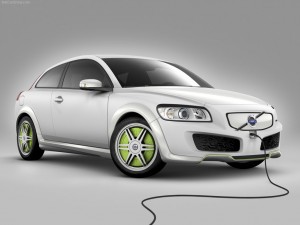The California Air Resources Board (CARB), in an effort to reduce greenhouse gas emissions, has mandated that automakers put 1.4 million electric and hybrid vehicles on the road by 2025. Not only is this potentially 'not do-able' as stated, it also has a loophole which prevents the plan from succeeding.
How CARB plans to force consumers to buy electric vehicles (EVs) and hybrids remains a mystery. After all, such vehicles are generally more expensive than traditional vehicles. If sales lag, will CARB send the Green Police to auto dealerships and tell them to stop selling anything but hybrids and EVs? Perhaps potential buyers will be sternly admonished by CARB to buy the proper cars under threat of financial penalty if they don’t.
Ok, I’m exaggerating (I hope.) But CARB, as is too often the case with California bureaucracies, seems to be simultaneously using a big club when a carrot would do the job far better, and believing that if the State of California says something is to be, that of course it will be. But California tried in 1990 to mandate the use of electric cars by saying that an increasing numbers of cars in California had to be Zero Emission Vehicles (ZEVs). It didn’t work. Car makers simultaneously played along and fought against it. The General Motors EV1 was ground zero for the fight, and GM eventually killed the car.
There were electric vehicles in America from 1895-1920. For a while gas, steam, and electric vehicles were on the road and it was unclear which technology would dominate. The gas vehicle probably won because homes then were switching from kerosene lighting to electricity. The existing network of kerosene dealers simply switched to selling gasoline.
The range of current EVs is better now than in the early 1900’s but still no more than 100 miles, sometimes less. The Tesla Roadster has a range of 240 miles, but it’s a two-seater and costs $100,000.
EVs are great for zipping around town but maybe not so great for long distance California commutes, unless of course, you could plug them in at work. But that leads to other problems. Several million EVs recharging on a hot August afternoon when electricity use is already at peak demand will require much more electricity generation than California has now.
As mentioned, the CARB plan has a big loophole. If car makers reduce overall fleet emission by 2 grams a mile, then they only need to sell half as many ZEVs and low-emission vehicles. So, while emissions might drop a bit if this happens, the lofty goals set by CARB will be undercut by their very own regulations. Not only is CARB insisting that people buy cars they approve of, they are simultaneously making it difficult for them to do so. There has to be a better way.
I bought my 2001 Prius in October 2000 and am still driving it. It’s a hugely reliable car that gets 45 mpg. It was also about 15% more expensive than comparable non-hybrids. We need to drop the price of hybrids so more can buy them. Also, some gasoline-only cars now have very low emissions and get upwards of 40 mpg. Electric vehicles probably aren’t ever going to be used for more than running errands or doing local deliveries. The battery power and range just isn’t there yet and probably never will be for long distances.
CARB should encourage people to buy EVs and hybrids by working to make them affordable. Mandating that people buy them without helping them do so didn’t work in 1990 and it won’t work now.

